Forget Recipes: Here’s How to Actually Build the Perfect Vegan Bowl
I’ve spent a lot of time in kitchens, both professionally and teaching workshops, and there’s one meal I always come back to: the protein bowl. It’s more than just tossing a bunch of stuff together; it’s a whole method for building a meal that’s genuinely satisfying. Let’s be real, those perfectly styled photos online are nice, but a truly great bowl is all about balance, texture, and flavors that actually make sense together. It’s a skill that will save you on busy weeknights, I promise.
In this article
A lot of recipes just throw an ingredient list at you. I want to show you the why behind the choices. We’re going to cover how to roast vegetables to get that deep, caramelized flavor, cook grains so they’re perfectly fluffy, and whip up a dressing that ties the whole thing together. This isn’t about one specific recipe. It’s a flexible framework you can adapt to whatever you have in the fridge.

By the way, this isn’t a 15-minute meal. Plan for about 20 minutes of prep and 45 minutes of cooking. But here’s the good news: the recipe I’ll walk you through makes enough for 2-3 hearty meals, and it’s incredibly budget-friendly.
Why This Bowl Actually Keeps You Full
A bowl that hits the spot isn’t a happy accident. It’s built on some solid principles that keep you full for hours and provide steady, reliable energy. Once you get the ‘why,’ you can build amazing bowls without even thinking.
The Big Three: Protein, Carbs, and Fat
Every truly balanced meal needs this trio to manage hunger. In a vegan bowl, we just get them all from plants. It’s that simple.
- Protein: This is what gives the meal its staying power. We’re talking about things like chickpeas, lentils, tofu, and tempeh. Protein digests slowly, which is the secret to feeling full long after you’ve finished eating. It’s what prevents that dreaded energy crash you get from a carb-only lunch.
- Complex Carbs: Think of these as your high-quality fuel. We use whole grains like quinoa, brown rice, or farro. Because of their fiber and structure, they break down slowly, giving you sustained energy instead of a quick spike and burn.
- Healthy Fats: Fat is your friend! It helps your body absorb certain vitamins and is crucial for feeling satisfied. In our bowl, this comes from the tahini in the dressing, some creamy avocado, and the olive oil we use for roasting.
Honestly, I’ve seen so many people make bowls with just grains and veggies. They always say they’re hungry an hour later. Adding a solid protein and a healthy fat is the game-changer.
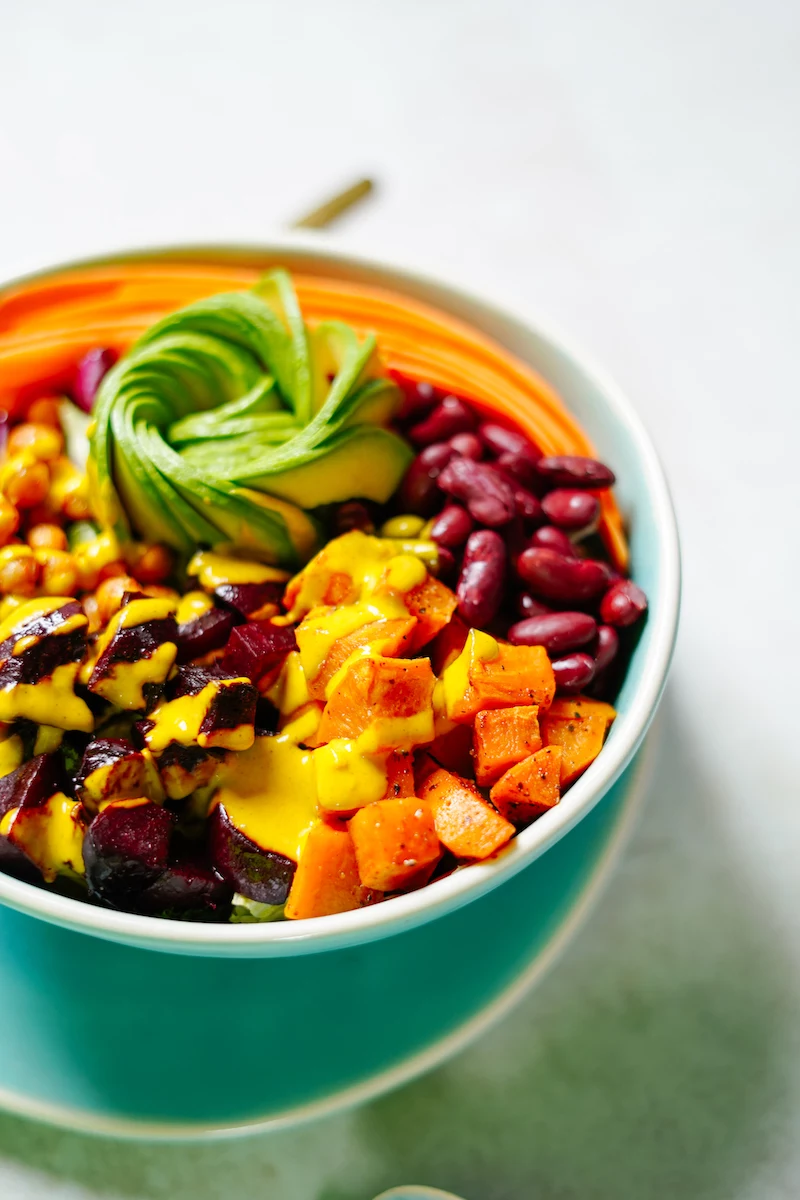
More Than Full: Making it Satisfying
Your brain needs more than just a full stomach to feel satisfied. A meal with a variety of textures and flavors is what really does the trick. A bowl of just soft stuff? Boring. Here’s what we’re aiming for:
- Crunchy: Think roasted chickpeas, slivers of raw carrot, or a sprinkle of toasted seeds.
- Creamy: Avocado is a classic for a reason. Our tahini dressing and the inside of a roasted sweet potato also fit the bill.
- Chewy: This is where a good grain like farro or barley shines. Baked tofu also has a great chew.
- Soft: Roasted beets or steamed greens provide a nice, tender contrast.
We’re also looking for a balance of tastes: sweet (from the roasted veggies), sour (the lemon in our dressing), salty, bitter (a hint from the tahini or some greens), and umami (that savory depth from roasted mushrooms or nutritional yeast). A good dressing is usually what pulls all of these together.
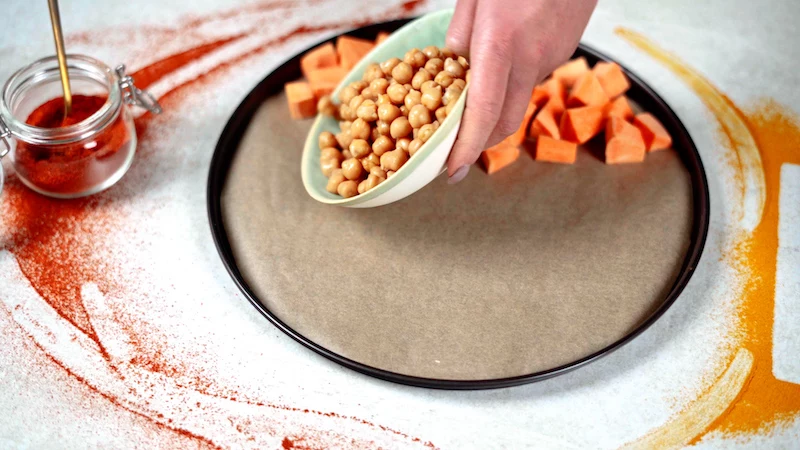
How to Nail Every Part of Your Bowl
The final product is only as good as its individual parts. These are the techniques the pros use to get consistent, delicious results every time. Quick tip: mise en place, a fancy term for getting all your ingredients prepped and ready before you cook, will make your life so much easier. Chop everything first, and the rest is a breeze.
Mastering Roasted Vegetables
Roasting isn’t just cooking; it’s flavor creation. The browning you see is a chemical reaction that creates hundreds of new flavor compounds. It’s why roasted veggies are infinitely better than steamed ones.
The Technique:
- Crank Up the Heat: Get that oven preheated to at least 400°F (200°C). If the oven isn’t hot enough, your veggies will just steam in their own moisture and turn out soggy. (Good to know: Home ovens can be wildly inaccurate. An oven thermometer costs about $10 on Amazon and is a worthy investment).
- Cut Evenly: Chop your veggies into roughly the same size. This helps them all cook at the same rate. And for chickpeas, pat them completely dry with a paper towel before oiling them up—it’s the key to getting them crispy.
- Give Them Space: This is the number one mistake I see people make. Spread your veggies in a single layer on the baking sheet. If they’re piled on top of each other, they trap steam and won’t get brown and beautiful. Use two pans if you have to!
- Use Enough Oil: Don’t be shy with the oil. It helps conduct heat and encourages browning. Toss the veggies in a bowl with oil and spices before spreading them on the pan. You’ll get a much more even coat than just drizzling it on top. About a tablespoon of oil per sheet pan is a good starting point.
Heads up! If you don’t have parchment paper, you can just oil the pan well. It works fine, but you might need a little extra elbow grease when it’s time to do the dishes.
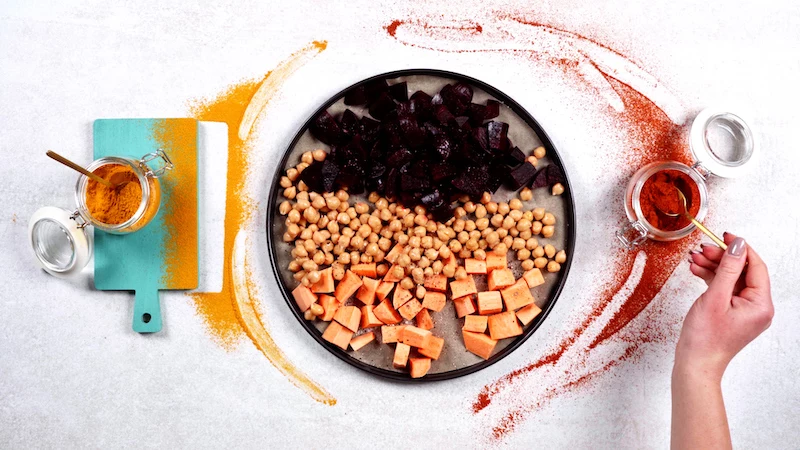
Getting Your Grains Just Right
Your grain is the foundation, so you want it to be fluffy, not a sticky mess. Different grains need different approaches.
- Quinoa: Always rinse quinoa in a fine-mesh sieve before cooking! It removes a natural coating called saponin that can taste a bit soapy. The magic ratio here is one part quinoa to two parts water. Bring it to a boil, then cover and simmer on low for about 15 minutes. Once the water is gone, take it off the heat and let it steam, still covered, for 5 more minutes before fluffing with a fork.
- Brown Rice: This one needs a bit more water, so go for a ratio of one part rice to two-and-a-half parts water. It takes longer, usually around 40-45 minutes, but that final fluffing step is just as critical.
- Farro: This ancient grain has an amazing chewy texture. The best way to cook it, honestly, is like pasta. Boil it in a big pot of salted water for 25-30 minutes until it’s tender, then just drain it. No mushiness, guaranteed.
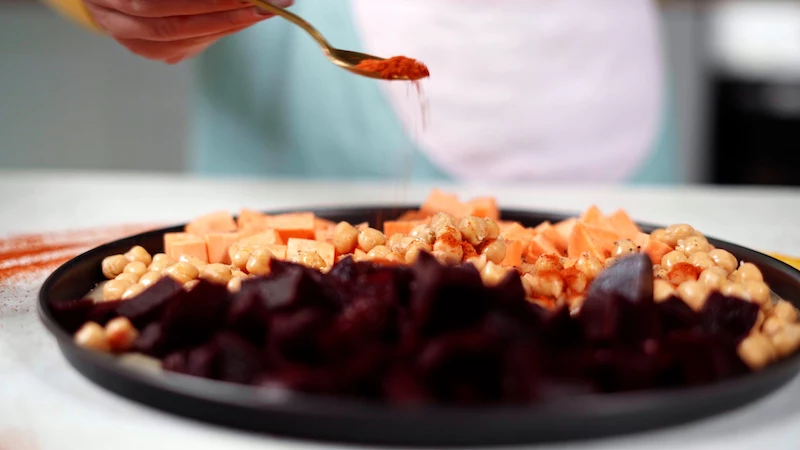
The Magic Tahini Dressing
A killer dressing pulls everything together. When you’re making this one, you’re creating an emulsion. When you first add water to tahini, it often seizes up and gets super thick before it thins out. Don’t panic! This is totally normal. The trick is to add the water slowly while whisking like you mean it. This helps the tahini become a creamy base before you add anything else.
Dressing Troubleshooting:
- Too Thick? Just whisk in more water, a teaspoon at a time, until it’s pourable.
- Too Thin? A little extra tahini will thicken it right back up.
- A Bit Bitter? The quality of tahini can vary a lot. A tiny bit of maple syrup or an extra pinch of salt can balance any bitterness.
Lesser-known trick: No whisk? No problem. Throw all the dressing ingredients into a jar with a tight-fitting lid and just shake it vigorously for a minute. It works perfectly and means one less dish to wash.
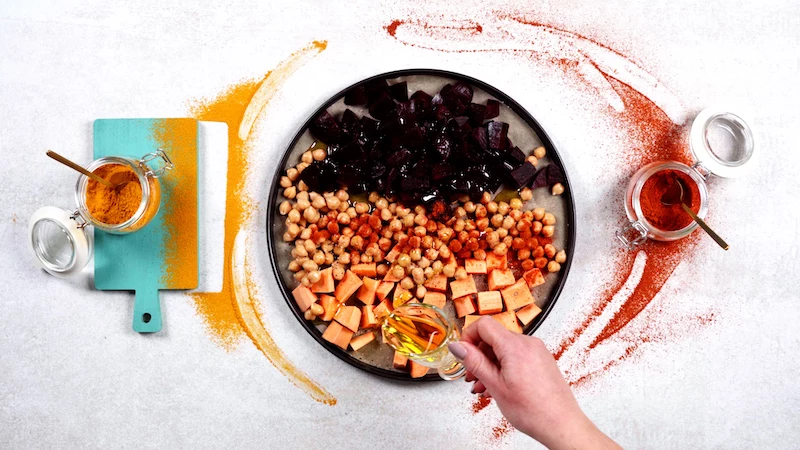
A Walk-Through Recipe: Your First Perfect Bowl
Okay, let’s put all that theory into practice. Think of this recipe as your training wheels. Once you make it, you’ll understand the structure and can start swapping things in and out like a pro.
Prep time: 20 minutes
Cook time: 45 minutes
Serves: 2-3 people
Protein Swaps & Add-Ins
Before we get to the ingredients, what if chickpeas aren’t your thing? No worries.
My no-fail method for tofu is to press a 14-ounce block of firm or extra-firm tofu for about 20 minutes to get the water out. Then, cube it up, toss it with a tablespoon of soy sauce and a teaspoon of cornstarch, and roast it right alongside your other veggies. It gets wonderfully chewy and browned. Tempeh works great this way, too!
Ingredients You’ll Need
For the Roasted Veggies:
- 1 large sweet potato (about 400g), scrubbed and cut into 1-inch cubes
- 1 can (15-ounce) chickpeas (a super cheap protein source, usually under $2 a can!), rinsed and patted very dry
- 2 medium beetroots (about 200g), peeled and cut into 1-inch cubes
- 2 tablespoons extra virgin olive oil
- 1 teaspoon salt & 1/2 teaspoon black pepper
- 1/2 teaspoon red pepper flakes (optional, for a little kick)
For the Turmeric Tahini Dressing:
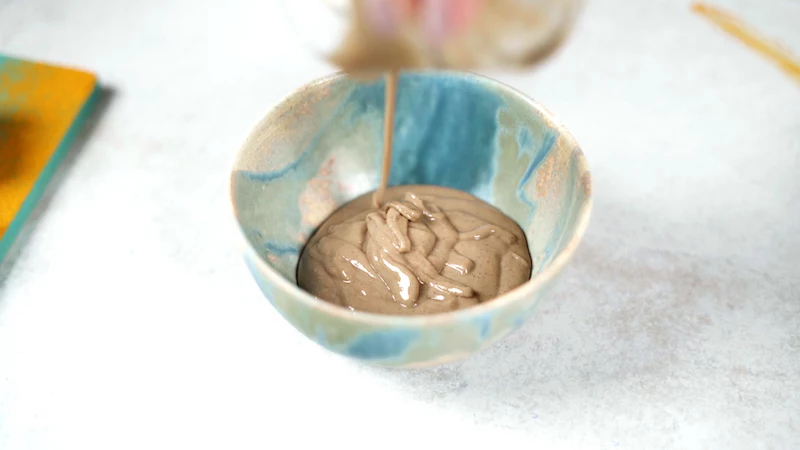
- 1/2 cup (120g) runny tahini. Look for brands like Soom or Ziyad, often in the international aisle for about $8-$12 a jar. They’re way better than the hard, separated stuff.
- 1/2 cup (120ml) cold water
- 1 large garlic clove, minced
- Juice of 1 lemon (about 3-4 tablespoons)
- 1/2 teaspoon salt
- 1 teaspoon ground turmeric
For Assembly:
- 4 cups mixed salad greens
- 1 large carrot, shredded or peeled into ribbons
- 1 can (15-ounce) red kidney beans (another great budget protein!), rinsed
- 1 large avocado, sliced
- Optional: Cooked quinoa or brown rice for a base
Step-by-Step Guide
- Get Roasting: Move your oven rack to the middle and preheat to 400°F (200°C). Line two large baking sheets with parchment paper.
- Season Everything: In a big bowl, combine the sweet potato, beetroot, and very dry chickpeas. Add the olive oil, salt, pepper, and red pepper flakes. Toss it all together until everything is glistening and coated.
- Roast ’em Up: Spread the veggies in a single, even layer across your two baking sheets. Remember, no crowding! Roast for 35-45 minutes, tossing them halfway through. They’re done when the sweet potatoes are soft and have brown, caramelized edges and the chickpeas are crispy.
- Make the Dressing: While that’s all roasting, whisk the tahini and garlic together in a small bowl. Slowly, slowly pour in the cold water while whisking. Once it’s smooth and creamy, whisk in the lemon juice, salt, and turmeric. Give it a taste and see if it needs anything else.
- Prep the Fresh Stuff: If you’re using grains, spoon them into the bottom of your bowls. Top with the greens. Get your carrot, beans, and avocado ready. A quick tip: slice the avocado right before you serve to keep it from browning.
- Bring It All Together: Arrange the fresh greens, carrots, and beans in your bowls. When the roasted veggies are done, let them cool for just a minute, then pile them on. Add the avocado slices and drizzle generously with that golden tahini dressing. Enjoy!
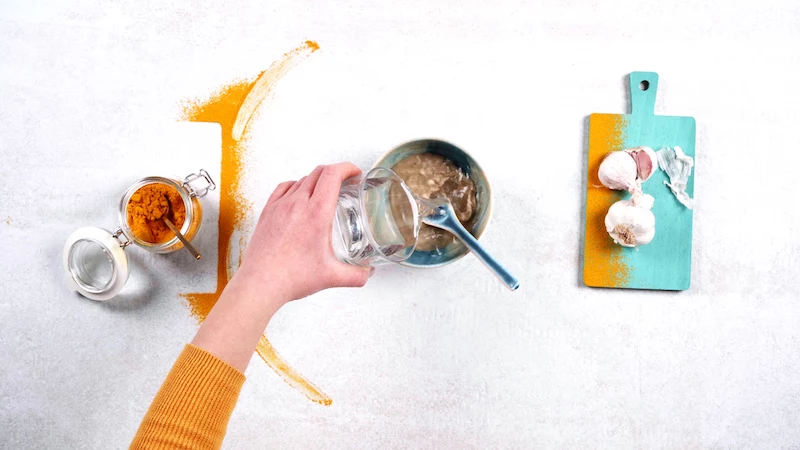
Level Up Your Bowl Game
Once you’ve got the hang of the basic formula, you can start getting creative. This is where the real fun begins.
Time-Saver Hacks for Busy People
- Weekend Warrior Prep: Cook a big batch of grains and roast a pan or two of veggies on Sunday. Store them in separate airtight containers in the fridge.
- Dressing for Days: Make a double batch of the dressing. It’ll keep in a sealed jar in the fridge for at least a week.
- Clever Shortcuts: There’s no shame in using pre-cooked grain pouches from the store (they’re in the rice aisle) or buying pre-shredded carrots or beets to save on prep time.
Inspiration from Around the World
The bowl concept is global! Steal some ideas to keep things interesting:
- Korean-Inspired: Add a scoop of kimchi for a spicy, fermented kick. Use a gochujang-based sauce instead of tahini.
- Japanese-Inspired: Use short-grain rice as a base and add steamed edamame, pickled radish, and a sprinkle of furikake seasoning. A miso-ginger dressing would be perfect here.
- Mediterranean-Inspired: Try a base of farro or couscous. Add fresh cucumber, tomatoes, and kalamata olives. A big dollop of hummus can serve as your creamy element.
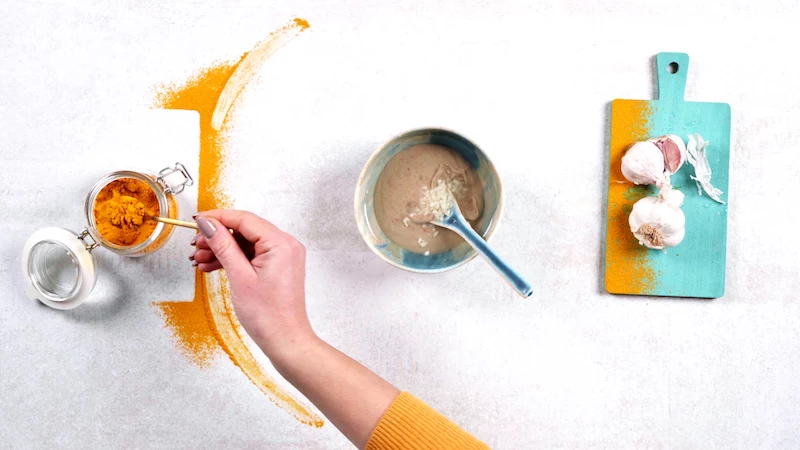
A Quick Note on Safety & Trust
Okay, a quick but important note. I’m a culinary pro, but I’m not a doctor or a registered dietitian. This is a guide for making a delicious, balanced meal, not medical advice. If you have specific health conditions or dietary needs, please chat with a qualified healthcare professional. It’s important to me that you trust the advice you get here, and that means being clear about what I do and don’t know.
Ultimately, the beauty of this meal is its endless flexibility. Use whatever veggies are in season. Try a new grain. Experiment with spices. These techniques are your tools—how you use them is what will help you find your own rhythm in the kitchen.
Inspirational Gallery
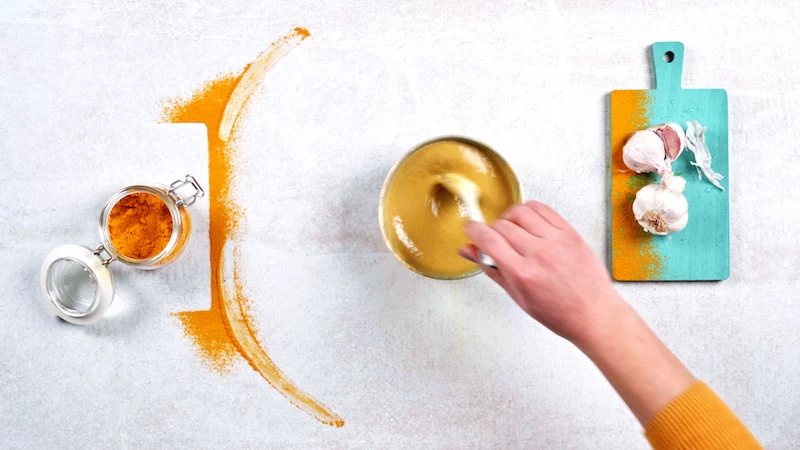
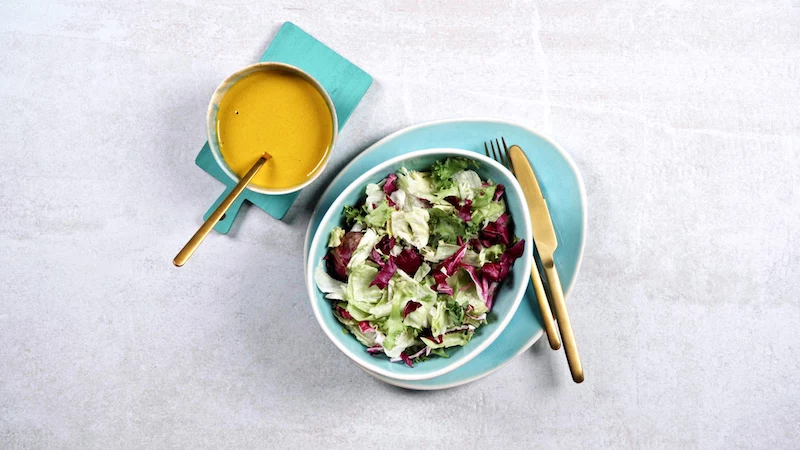
Tofu: A soft, neutral base, it’s a sponge for flavor. Perfect for marinating in soy-ginger or a spicy peanut sauce before baking or pan-frying.
Tempeh: Made from fermented soybeans, it has a firm, chewy texture and a distinct nutty flavor. It’s fantastic when crumbled like ground meat or sliced into planks and pan-seared. Try a brand like Lightlife or Tofurky to start.
For a bowl, tempeh holds its structure better, while tofu excels at soaking up your chosen dressing.
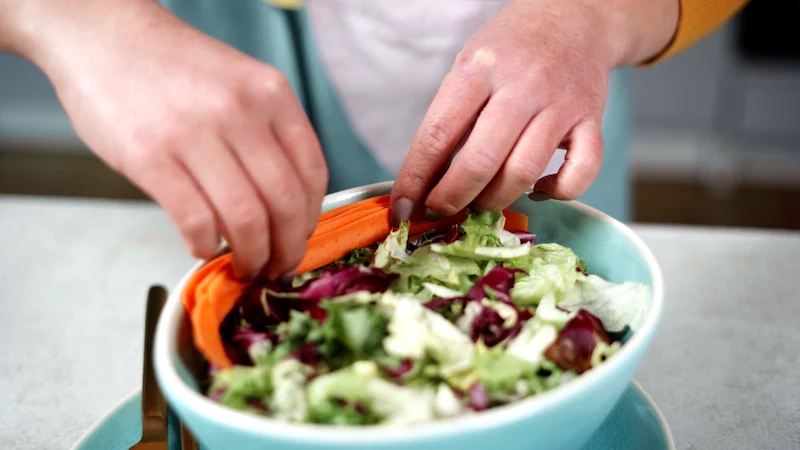
A bowl without crunch is just a sad salad.
It’s a fundamental culinary principle: our enjoyment of food is massively enhanced by textural contrast. That’s why the soft creaminess of avocado pairs so beautifully with the bite of a roasted sweet potato and the pop of a toasted pumpkin seed. Don’t neglect the crunch; it’s what makes each bite interesting.
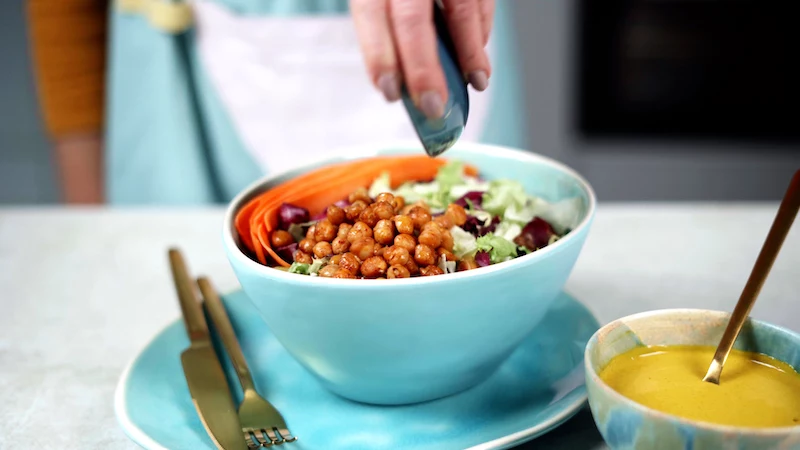
The secret to a bowl that looks as good as it tastes often lies in the final 10 seconds of assembly. A generous handful of fresh, chopped herbs like cilantro or parsley adds an instant burst of color and freshness. A sprinkle of black sesame seeds or chili flakes provides visual contrast and a final layer of flavor. It’s these small details that elevate a simple meal into something special.
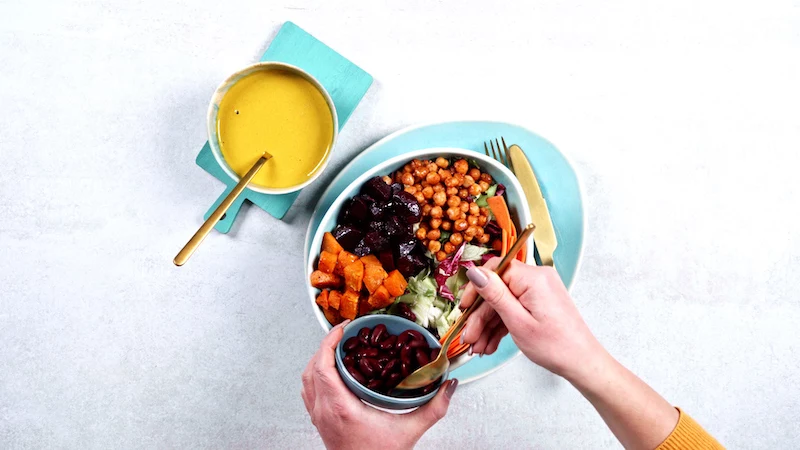
My grains are always mushy. What am I doing wrong?
This is a common frustration! First, try toasting your grains (like quinoa or farro) in a dry pot for a few minutes before adding water; it enhances their nutty flavor. Second, use slightly less water than the package suggests—for quinoa, a 1:1.75 grain-to-water ratio is often better than 1:2. Finally, once cooked, remove from heat, let it stand covered for 5-10 minutes, and then fluff with a fork. This lets the steam distribute evenly instead of turning the bottom layer to mush.
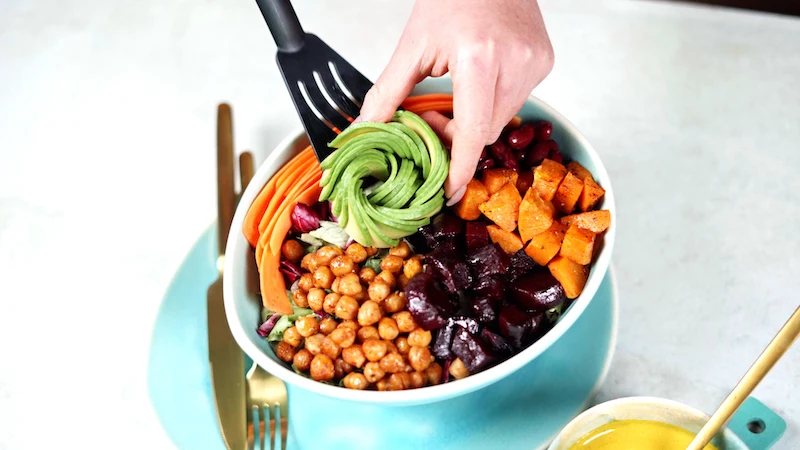
- Adds a bright, acidic counterpoint to rich flavors.
- Introduces a satisfying tangy crunch.
- Provides a stunning pop of vibrant color.
The secret? Quick-pickled onions. Thinly slice a red onion and place it in a jar. Cover with apple cider vinegar, a teaspoon of sugar, and a big pinch of salt. Shake it up and let it sit for at least 30 minutes. They’ll keep in the fridge for weeks and improve almost any bowl.
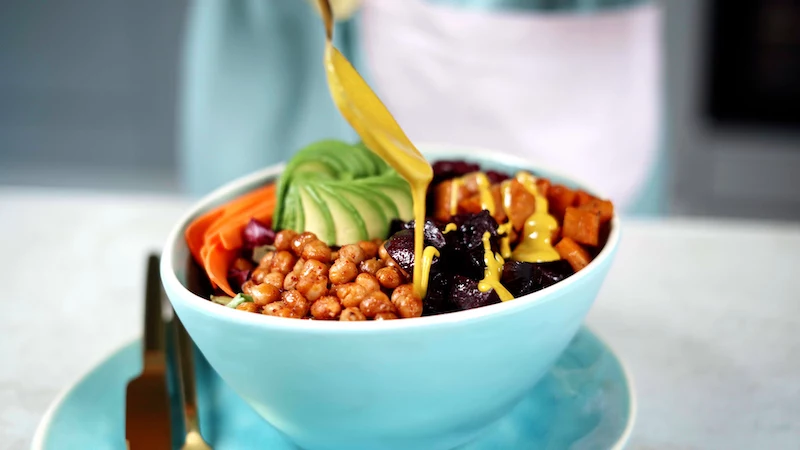
The average American household throws away nearly $1,500 worth of food each year.
Vegan bowls are a powerful tool against food waste. That half an onion, the slightly wilted kale in the crisper, the last cup of leftover rice, and the can of beans in the pantry are not random leftovers; they are the exact building blocks of your next great meal. A bowl gives every ingredient a purpose.
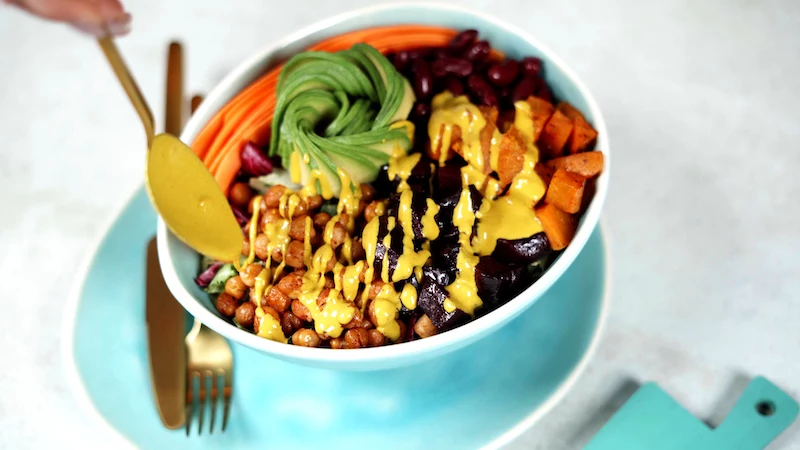
Important point: The key to deeply flavorful roasted vegetables is high heat and non-crowding. Spread your veggies in a single layer on a baking sheet, ensuring they have space. Roast at 400-425°F (200-220°C). This allows them to caramelize and get crispy edges rather than just steaming in their own moisture. Mushy, pale vegetables are a bowl’s worst enemy.
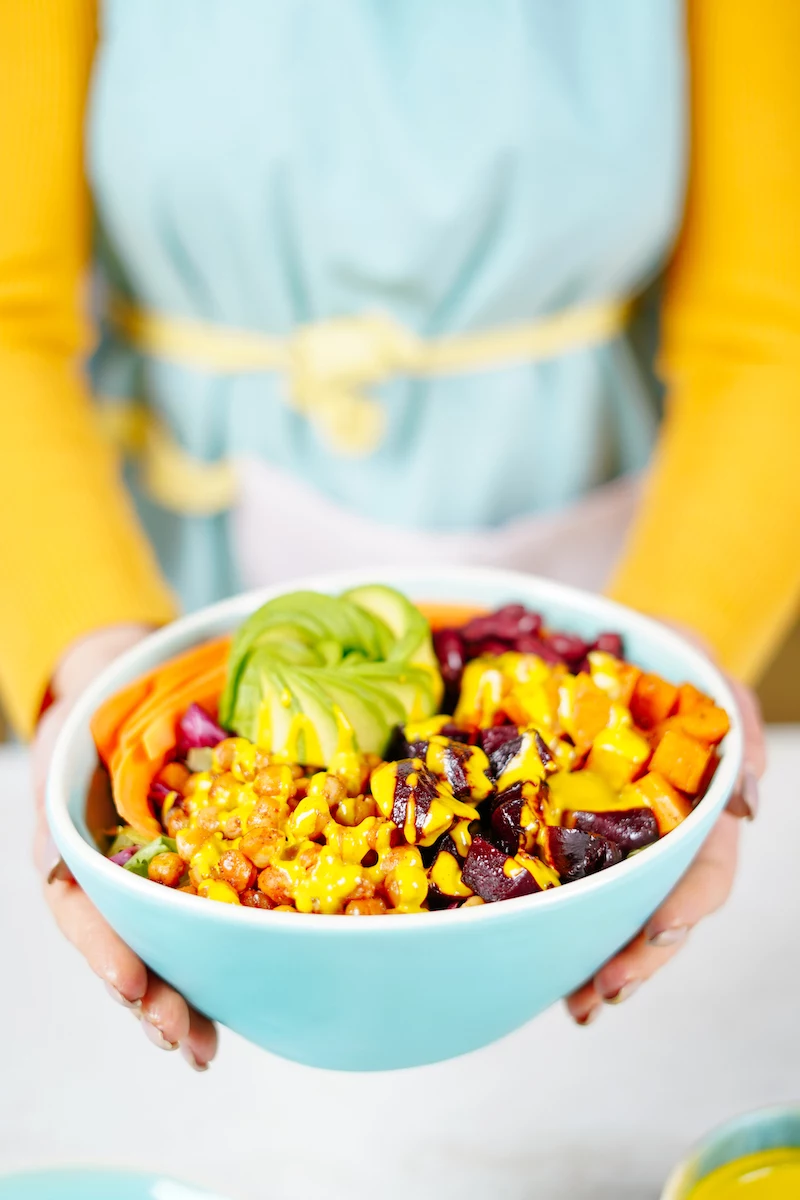
Think beyond the standard grain base. Why not try a bed of creamy polenta, seasoned with nutritional yeast for a cheesy flavor? Or for a lighter, grain-free option, use cauliflower rice sautéed with garlic or spiralized zucchini noodles. It’s an easy way to vary the texture and nutrient profile of your go-to bowl.
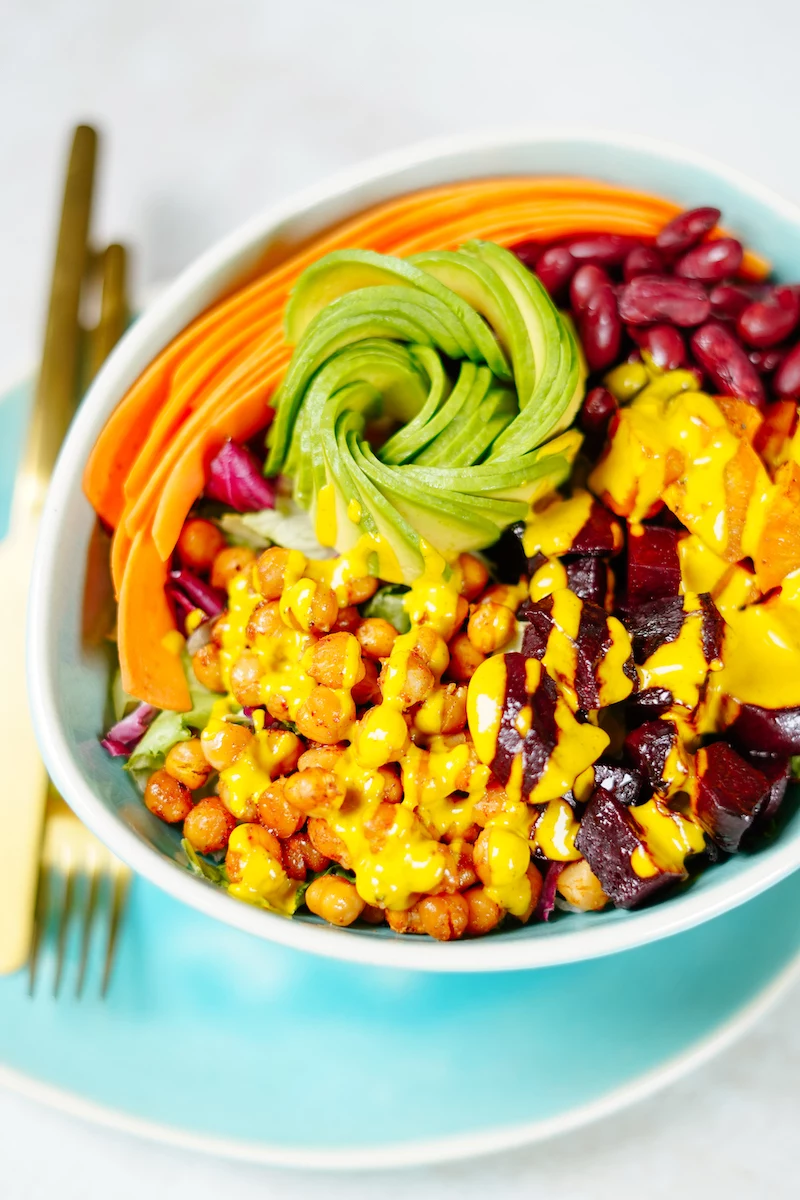
To really make your dressing sing, start with exceptional ingredients. When it comes to tahini, not all jars are created equal. A high-quality, runny brand like Soom or Ziyad will blend into a perfectly smooth, creamy sauce. They are less bitter and won’t clump, making your dressing prep effortless.
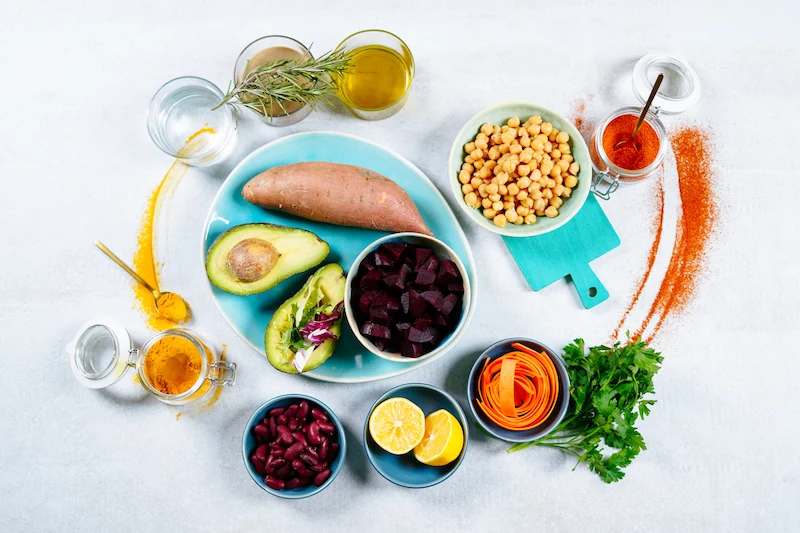
- Spiced & Roasted Chickpeas: Toss canned, drained chickpeas with olive oil, smoked paprika, cumin, and garlic powder. Roast until crispy.
- Toasted Seeds: A mix of pumpkin and sunflower seeds, toasted in a dry pan for 2-3 minutes, adds richness.
- Crispy Shallots: Thinly sliced and pan-fried in a little oil until golden brown, they add an irresistible savory crunch.
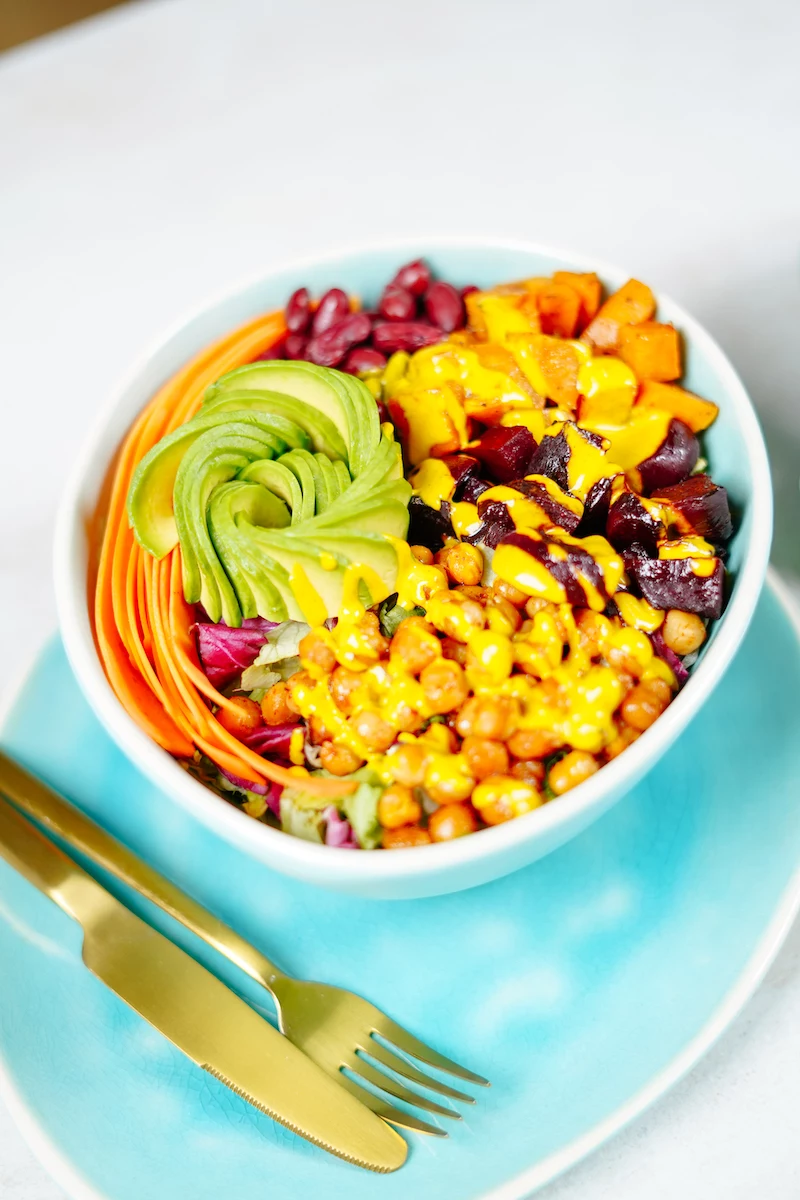
How do I meal prep bowls for the week without everything getting soggy?
The trick is strategic separation. Cook your grains, proteins, and roasted vegetables and store them together in airtight containers. In separate, smaller containers or jars, pack your dressing, any delicate greens (like spinach or arugula), and crunchy toppings (like nuts or seeds). Just before serving, combine everything. This keeps the greens crisp, the toppings crunchy, and prevents the dressing from making everything watery.
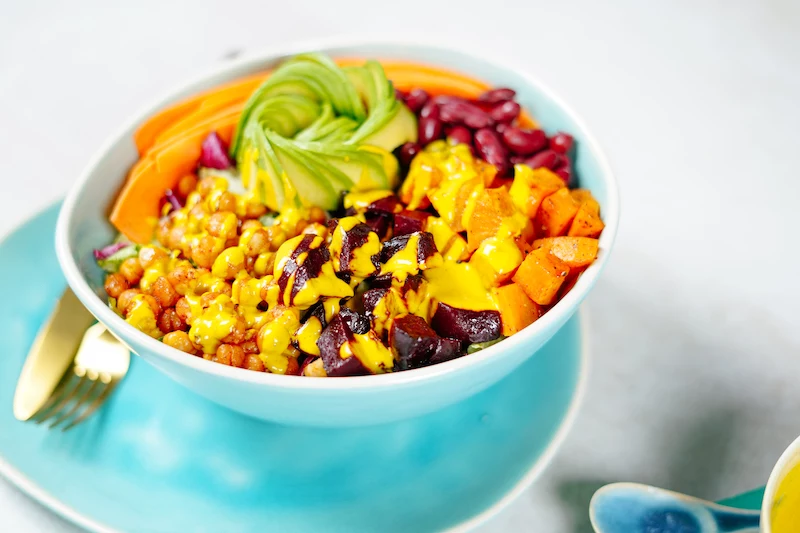
Take a trip to Mexico without leaving your kitchen. Build a burrito bowl with a base of cilantro-lime rice, topped with black beans, corn salsa, fajita-style peppers and onions, and a big scoop of guacamole. For protein, use crumbled, seasoned tempeh or baked tofu cubes tossed in chili powder.
- Lentils (brown or green)
- Canned Black Beans
- Edamame (shelled, from frozen)
- Split Peas
These are the budget-friendly powerhouses of the plant-based world. A serving of any of these costs mere cents and provides a fantastic foundation of protein and fiber to keep you full and energized.










